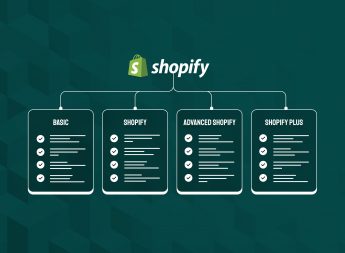Choosing the Best-Fit Outsourcing Model for Businesses

In this blog, we will explore the various outsourcing models and provide guidance on how to choose the one that best suits business needs and objectives. Whether you are a small startup or a large enterprise, finding the right outsourcing model can make all the difference in achieving growth.
Pros and Cons of the Various Outsourcing Models
Onshore Outsourcing
Onshore outsourcing refers to the practice of contracting services or projects to a third-party provider within the same country or geographic region as the business. It involves partnering with local companies or freelancers who are familiar with the business environment, culture, and language.
Pros and Cons
Pros:
- Easier communication and collaboration due to proximity
- Cultural alignment and familiarity with local regulations and practices
- Reduced risk of data security and intellectual property concerns
Cons:
- Higher costs compared to offshore or nearshore options
- Limited access to specialised skills and resources
When to consider onshore outsourcing
Onshore outsourcing is often a suitable choice when businesses require close collaboration, frequent communication, or strict adherence to local regulations. It can also be beneficial when dealing with sensitive information that requires a high level of data security or intellectual property protection.
Offshore Outsourcing
Offshore outsourcing involves contracting services or projects to a third-party provider in a different country or continent. This model often offers cost savings due to lower labour costs in offshore locations.
Pros and Cons
Pros:
- Cost savings due to lower costs
- Access to a larger talent pool with specialised expertise
- 24-hour productivity through time zone differences
Cons:
- Challenges with communication, language barriers, and potential cultural differences
- Concerns regarding data security and intellectual property protection
When to consider offshore outsourcing
Offshore outsourcing is often suitable for businesses looking to reduce costs without compromising on quality. It can be beneficial for projects that do not require frequent face-to-face interactions or real-time communication. Offshore outsourcing is also advantageous when businesses require specific skills or expertise that may be more readily available in certain offshore locations.
Nearshore Outsourcing
Nearshore outsourcing involves contracting services or projects to a third-party provider in a neighbouring or nearby country. This model combines the advantages of onshore and offshore outsourcing by offering geographical proximity and cultural similarities.
Pros and Cons
Pros:
- Geographical proximity for easier communication and collaboration
- Overlapping time zones and cultural similarities
- Cost savings compared to onshore options
Cons:
- Potential language barriers or differences in business practices
- Limited access to specialised skills compared to offshore outsourcing
When to consider nearshore outsourcing
Nearshore outsourcing is often a suitable choice when businesses require a balance between proximity and cost savings. It is beneficial when frequent communication and collaboration are necessary, but the business wants to leverage the advantages of lower costs in nearby countries. Nearshore outsourcing can also be advantageous when there are cultural or language similarities that facilitate smoother project execution.
Dedicated Team Model
The dedicated team model involves forming a dedicated team of professionals who work exclusively on a specific project or set of tasks for the business. This team operates as an extension of the business’s internal team and is fully dedicated to their project.
Pros and Cons
Pros:
- Greater flexibility and control over the project
- Handpicked team with required skills and expertise
- Seamless integration with the business’s internal processes
Cons:
- Challenges with communication and coordination if the team is located in a different geographical location
- Time zone differences and potential language barriers impacting collaboration
When to consider the dedicated team model
The dedicated team model is often a suitable choice when businesses require long-term or ongoing support for a specific project or set of tasks. It is beneficial when there is a need for specialised skills or expertise that may not be available internally. The dedicated team model also provides flexibility in scaling resources up or down based on project requirements.
Staff Augmentation Model
The staff augmentation model involves supplementing the business’s internal team with external resources on a temporary basis. These resources work alongside the internal team, providing additional support and expertise as needed.
Pros and Cons
Pros:
- Scalability and flexibility in resource allocation
- Access to specialised skills and expertise without long-term commitment
- Bridge skill gaps within the internal team
Cons:
- Integration and coordination challenges when working with external resources
- Clear communication and project management needed for effective collaboration
- Transition and knowledge transfer management requirements
When to consider the staff augmentation model
The staff augmentation model is often a suitable choice when businesses require short-term or temporary support for specific projects or tasks. It is beneficial when there is a need for specialised skills or expertise for a limited period of time. The staff augmentation model also provides flexibility in managing resource allocation and can help bridge any skill gaps within the internal team.
Selecting the Appropriate Outsourcing Model
When selecting the right outsourcing model for a business, it is important to consider several factors:
1. Project requirements: Assess the specific needs of the project, including skill requirements, timeline, and budget constraints.
2. Communication and collaboration: Consider the level of communication and collaboration required for the project. Evaluate whether proximity and cultural similarities are important factors in achieving project success.
3. Cost considerations: Analyse the budget and determine the level of cost savings needed to achieve through outsourcing.
4. Scalability: Consider the scalability requirements of the project. Determine whether there is a need for flexibility to easily scale resources up or down as needed.
5. Expertise and specialisation: Assess whether the project requires specialised skills or expertise that may not be readily available internally.
6. Risk management: Evaluate the potential risks associated with each outsourcing model, such as data security, intellectual property protection, and quality control.
By carefully considering these factors, a business can make an informed decision on the most suitable outsourcing model.
Conclusion
Finding the best-fit outsourcing model for a business requires careful consideration of factors such as cost-effectiveness, resource availability, and project requirements. Each outsourcing model has its own set of pros and cons, and the decision ultimately depends on specific needs and goals. However, if a reliable outsourcing partner with dedicated teams available for a variety of models is needed, Vsourz is an excellent choice.
With extensive experience and expertise, Vsourz can assemble a dedicated team tailored to project requirements. By partnering with Vsourz, a winning partnership can be forged that will accelerate technological success and drive growth for the business. Contact us today to discuss how we can meet outsourcing needs and help achieve business objectives.






